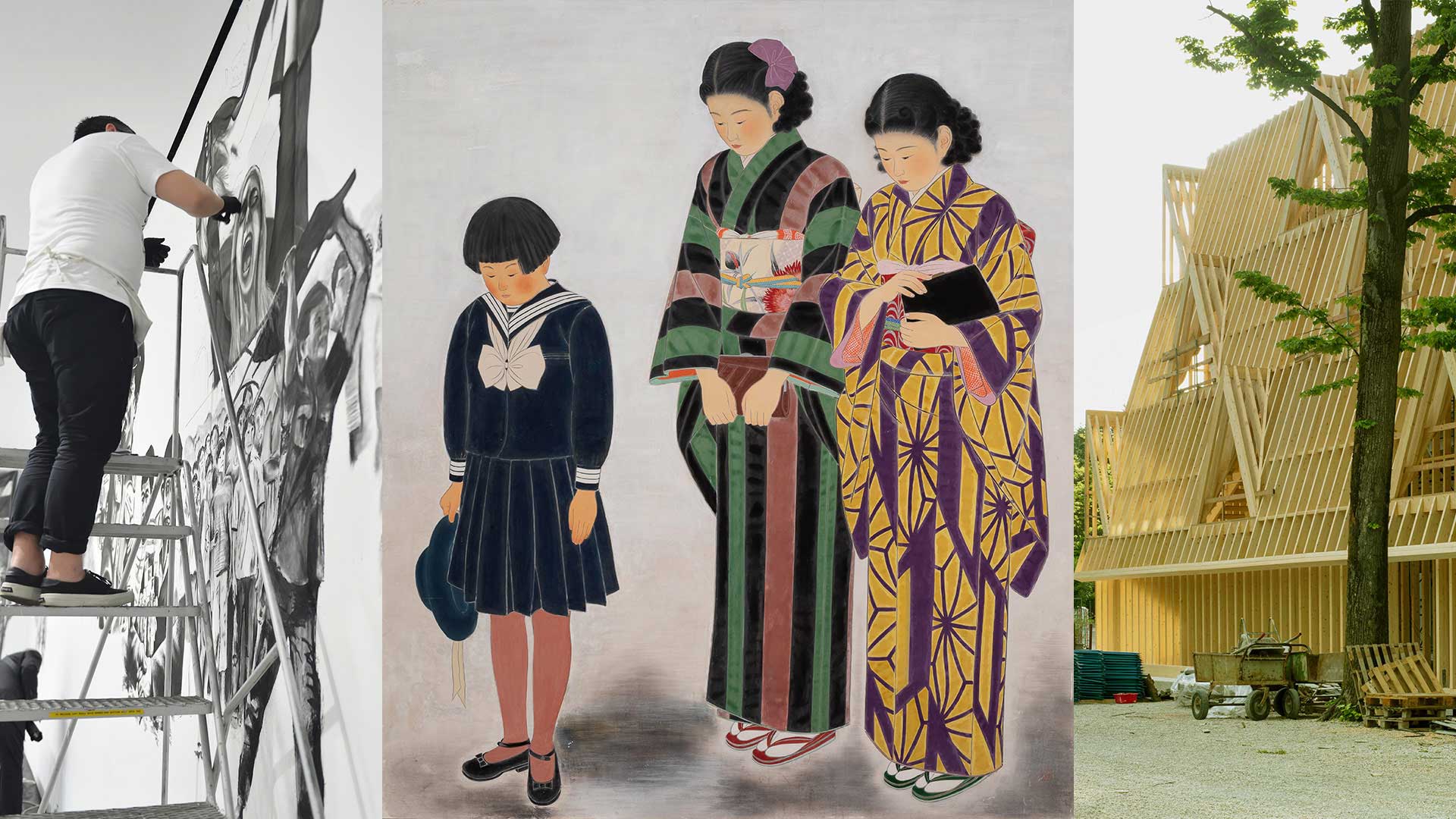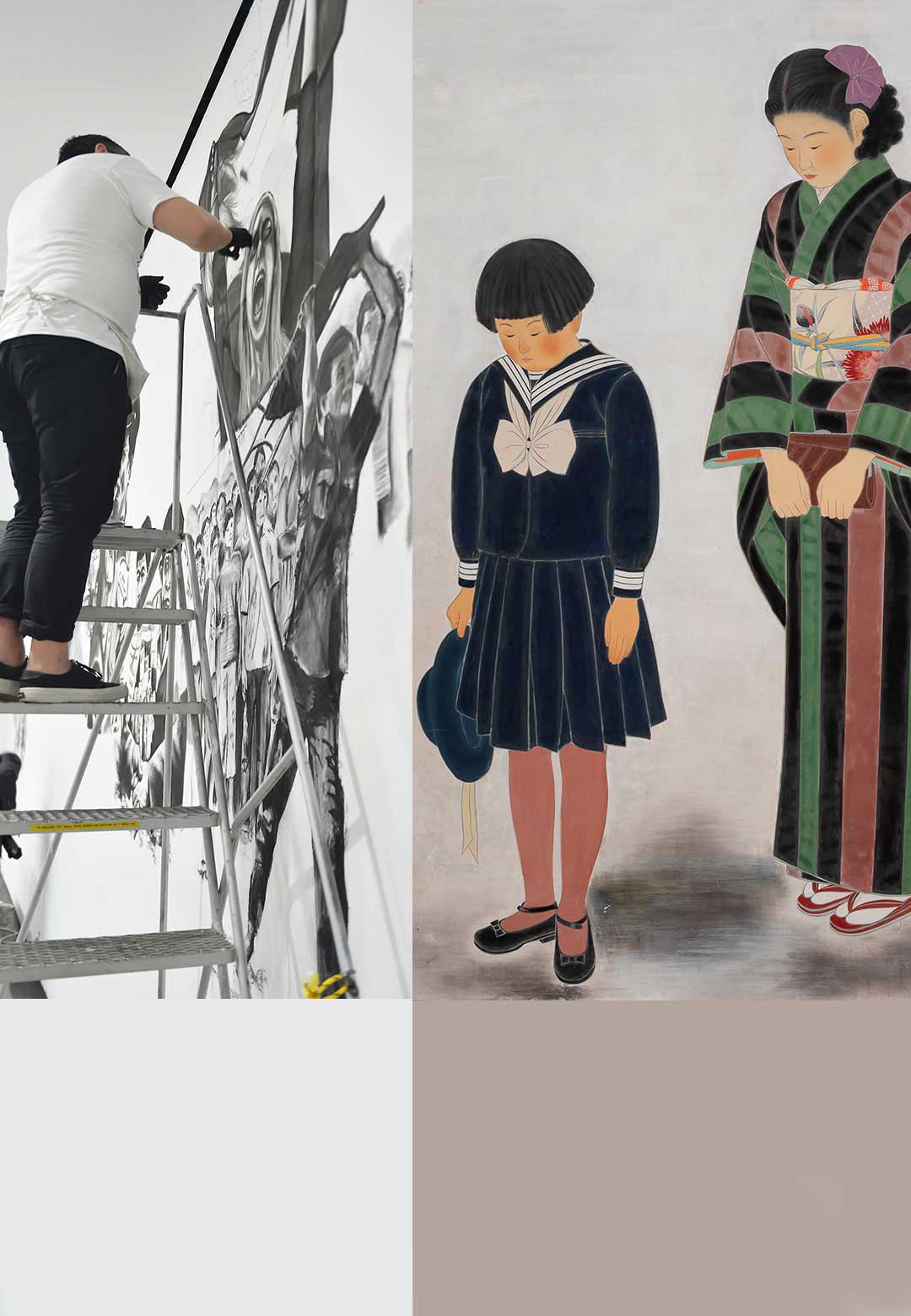US based art, architecture and design gallery, Wrightwood 659 in Chicago will soon host three distinct exhibitions in its unique gallery space from 6 May to 30 July 2022. The exhibitions, namely ‘AMERICAN FRAMING’, ‘Rirkrit Tiravanija: (who’s afraid of red, yellow, and green)’ and ‘Moga: Modern Women & Daughters in 1930s Japan’, will feature a reinstallation of United States's entry to the 17th Venice Architecture Biennale, Rirkrit Tiravanija’s critically acclaimed artwork, (who’s afraid of red, yellow, and green), and a selection of some rarely seen paintings of women and children from 1930s Japan, respectively. In addition to these new exhibitions, the exhibition ‘We Shall Defy: Shahidul Alam’, which comprises images and texts spotlighting the life and work of Bangladeshi photojournalist and activist, Shahidul Alam, will also remain on view.
All four exhibitions will fill the spaces of the gallery that is housed in a 1920s building that has been revamped by Japanese architect, Tadao Ando in his characteristic minimalistic style. Against the muted backdrop of Ando’s architecture, the exhibits will command a bold presence. “Each show speaks to the institution’s founding mission to present exhibitions devoted to architecture and to socially engaged art, including under-recognized artists and works,” says Chirag Badlani, Executive Director of Alphawood Foundation Chicago which is responsible for supporting the three exhibitions.
The ‘AMERICAN FRAMING' exhibition will spotlight one of the most common construction systems used in America, namely wood framing. By reinstalling the showcase that was presented by the US Pavilion at the International Architecture Exhibition of La Biennale di Venezia in 2021, it will serve both as a homage to the simple and sturdy construction technique and an acknowledgement of the large-scale installation created for the event last year. Co-curated by Paul Preissner and Paul Andersen, who are architects and professors, the exhibition also serves to draw attention to the cultural practices in the country at a time when it is struggling with its history. “AMERICAN FRAMING examines the familiar architecture of the country’s most common construction system and argues a profound and powerful future for design can be conceived out of an ordinary past,” says Paul Andersen.
The exhibition will feature a monumental installation constructed using the wood framing method as well as scaled down models and process photographs in order to communicate the idea of the exhibition in a comprehensive manner. The gallery’s three-storey atrium will house the wooden frame structure which will beckon visitors to enter and explore the space created within the installation and the indoor spaces on the third floor will house the smaller models and photographs that can be perused at leisure. These scaled down showcases will not only serve to educate the visitors about the construction method but will also trace the history of wood framing right from its early development in the 19th and 20th century to the present. The gallery space will also be dotted with chairs, rockers, benches and other furniture items made out of common lumber.
The second exhibition, ‘Rirkrit Tiravanija: (who’s afraid of red, yellow, and green)’, will recast the gallery’s second floor into a communal dining space where visitors will be offered Thai curry while large-scale murals will be drawn on the walls. Conceived by critically acclaimed Thai artist, Rirkrit Tiravanija, this artwork was initially created in 2010 and will now be displayed from the collection of Smithsonian’s Hirshhorn Museum and Sculpture Garden in Washington, DC. Tiravanija, instead of creating artworks traditionally, utilises his creative prowess to manifest the essence of communities in his work. The exhibition will witness murals inspired by the photojournalistic images of protests being drawn on the walls. By subverting the traditional museum going experience, Tiravanija challenges and provokes visitors to rethink the notions of government and liberty.
Tiravanija, instead of focusing on works that are permanent, attempts to create artworks in real-time. This means that his work also defies any well defined classification. In a career spanning 30 years, Tiravanija has attempted to break the barrier between the object and observer by creating an environment where the spectator is a part of the showcase. The colours mentioned in the title of the exhibition, namely red, yellow and green, refer to the colours that were worn by Thai protestors at odds with each other. It also refers to Barnett Newman’s painting ‘Who’s Afraid of Red, Yellow, and Blue II’ painting series, two of which were vandalized. The first attack on one of the paintings, “Who’s Afraid of Red, Yellow and Blue IV” in 1982, was attempted to destroy the painting under the pretext that the painting was a “perversion” of the German flag. In re-iterating Newman’s attempt to paint a picture, Tiravanija has also titled his work similarly, albeit without the same extroverted boldness. Instead, the title of the artist’s artwork uses lowercase letters and parenthesis, thus softening the impact.
‘Moga: Modern Women & Daughters in 1930s Japan’ will feature a selection of Japanese paintings that offer an intimate view of life in the 1930s in Japan. The exhibition will include paintings that expand on the common depiction of the modern urban girl, known as ‘modan’, ‘gāru’ or ‘moga’ in Japanese. The 1920s Japan saw a shift in the lifestyle supposed to be ideal in the country. It moved more towards an independent lifestyle that challenged the accepted ideal of “good wife, wise mother”. However, the image of a woman did not take on any uni-dimensional identity and continued to diversify during the 1930s. The exhibition serves to bring forth this diversity through the image of the “modern girl”.
These three exhibitions, scheduled to debut in spring this year, are diverse and dynamic in their own right. Together, they poke at the questions of identity, culture, politics and representation.






 Sign in with email
Sign in with email










What do you think?